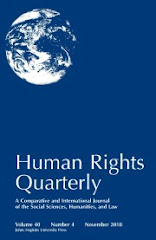China was one of the original contracting parties to General Agreement on Tariffs and Trade (GATT) 1947. It ceased to be a member in the aftermath of her 1949 Revolution and establishment of an alternative seat of government by the ‘Nationalist Party’ in Taiwan. Following more than fifteen years of sustained negotiation, China once again became a member of the World Trade Organization (WTO) – its 143rd member – in December 2001. In the period between the original GATT agreement of 1947 and the Uruguay Round WTO agreement of 1994, GATT itself had been transformed from being an effete, uncoordinated body to the dominant force in international trade it now is. This article investigates the reasons that prompted China to press on with her attempt to rejoin the international trading body in the face of the reputedly onerous accession commitments she was required to fulfil, and of the skirmishes she continues to have with some of the major players in the WTO, namely the EU and the US on her progress in fulfilling these commitments. This article is divided into the following four sections. Section 1 provides a historical perspective of the evolution of China’s foreign trade-related laws and its decision to regain membership of the WTO. Section 2 discusses the changes to China’s domestic trade laws to comply with the WTO laws, mainly the GATT, General Agreement on Trade in Services (GATS), and Trade-Related Aspects of Intellectual Property Rights (TRIPS), as required by the Protocol on the Accession of the People’s Republic of China (PRC). Section 3 discusses some continuing issues relating to the fulfilment of her accession commitments, and Section 4 concludes by an evaluation of the progress made thus far and of future directions relating to the legal convergence of China’s trade-related laws and the WTO laws.
Wednesday, August 19, 2009
Sappideen & He: Reflections on China's WTO Accession Commitments and Their Observance
Razeen Sappideen (Univ. of Western Sydney - Law) & Ling-Ling He (Univ. of Western Sydney - Law) have posted Reflections on China's WTO Accession Commitments and Their Observance (Journal of World Trade, Vol. 43, no. 4, p. 847, 2009). Here's the abstract:





